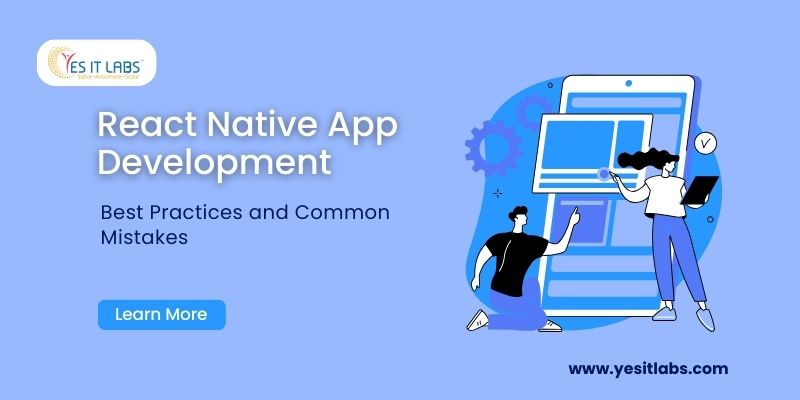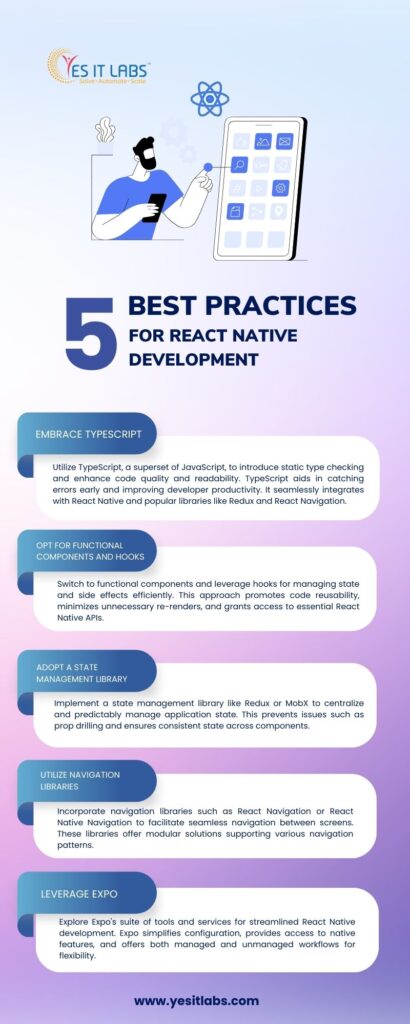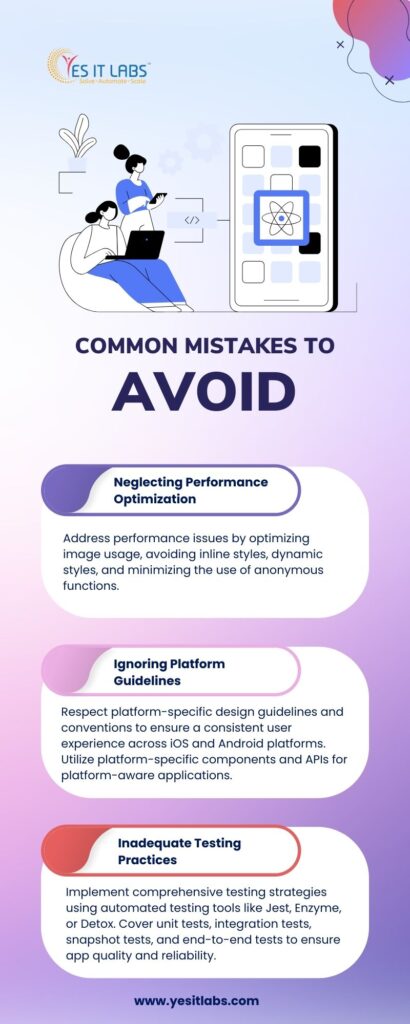
Exploring the Top React Native App Development Trends in 2024
Hey there, fellow tech enthusiasts and budding app developers! Are you ready to dive into the exciting world of React Native app development trends in 2024? If you’re passionate about staying ahead in the ever-evolving landscape of mobile app development, then you’re in for a treat. Today, we’re going to explore the latest trends shaping the React Native ecosystem and why they’re worth watching.
But before we jump into the trends, let’s address a couple of burning questions you might have about React Native:
Can I make apps with React Native?
Absolutely! React Native is a powerful framework that allows developers to build cross-platform mobile applications using JavaScript. Whether you’re a seasoned developer or just starting out, React Native provides a robust set of tools and libraries to bring your app ideas to life.
What programming language is used in React Native?
React Native primarily uses JavaScript, one of the most popular and versatile programming languages in the world. This means that developers familiar with JavaScript can leverage their existing skills to build native-quality mobile apps for both iOS and Android platforms.
Now that we’ve cleared that up, let’s delve into the top React Native app development trends that are making waves in 2024:
1. Adoption of React Native for Web Development
- In 2024, we’re witnessing a significant shift towards using React Native not only for mobile app development but also for web development. This trend is driven by the desire for a unified codebase and seamless user experiences across platforms.
- React Native for web development allows developers to write once and deploy everywhere, reducing development time and effort while maintaining consistency across platforms.
2. Enhanced Performance with Hermes
- Hermes, an open-source JavaScript engine optimized for React Native, is gaining traction as developers seek to improve app performance and startup times.
- With Hermes, React Native apps can achieve faster execution of JavaScript code, resulting in smoother user experiences and reduced memory usage.
3. Integration of AI and Machine Learning
- AI and machine learning are revolutionizing the way we interact with mobile apps, and React Native developers are embracing this trend by integrating AI-powered features into their applications.
- From personalized recommendations to natural language processing, AI and ML capabilities are enhancing user engagement and driving app adoption.
4. Focus on Accessibility
- Accessibility is becoming increasingly important in app development, and React Native developers are prioritizing inclusive design practices to ensure that their apps are accessible to users of all abilities.
- By incorporating features such as voice commands, screen readers, and high-contrast interfaces, developers can make their apps more usable and inclusive.
5. State Management with Recoil
- Recoil, a state management library for React, is gaining popularity among React Native developers for its simplicity and flexibility.
- With Recoil, developers can manage complex state logic more efficiently, leading to cleaner codebases and improved app performance.
6. Rapid Prototyping with Expo
- Expo, a set of tools and services for React Native development, continues to be a favorite among developers for rapid prototyping and iteration.
- With Expo’s extensive library of pre-built components and simplified build process, developers can quickly create prototypes and test ideas without getting bogged down in configuration details.
7. Blockchain Integration
- Blockchain technology is making its mark in various industries, and React Native developers are exploring ways to integrate blockchain features into their apps.
- Whether it’s implementing secure payment systems, decentralized identity solutions, or NFT marketplaces, blockchain integration offers new opportunities for innovation and monetization.
8. AR and VR Experiences
- Augmented reality (AR) and virtual reality (VR) are transforming the way we interact with digital content, and React Native developers are leveraging these technologies to create immersive experiences.
- By integrating ARKit, ARCore, or WebXR APIs, developers can build AR and VR features that enhance user engagement and bring virtual worlds to life.
FAQs
Q: How do I find the right React Native app development company?
A: When searching for a React Native app development company, look for expertise, experience, and a proven track record of delivering high-quality apps. Be sure to check client testimonials, case studies, and portfolios to gauge the company’s capabilities.
Q: How can I hire React Native developers for my project?
A: Hiring React Native developers can be done through various channels, including freelance platforms, job boards, and specialized tech recruitment agencies. Be sure to thoroughly vet candidates based on their skills, experience, and cultural fit with your team.
In conclusion,
The React Native app development landscape in 2024 is brimming with exciting opportunities and innovations. By staying abreast of the latest trends and leveraging cutting-edge technologies, developers can create mobile apps that not only meet but exceed user expectations. So, if you’re looking to dive into this dynamic field, don’t hesitate to hire React Native developers who can help you navigate and capitalize on these trends. Roll up your sleeves, embrace the trends, and embark on your journey to building the next generation of React Native apps!
Tags: hire React Native developers, react native app development company, React Native app development company in USA, React Native app development trends, React Native apps





 Use TypeScript
Use TypeScript Not optimizing performance.
Not optimizing performance.
